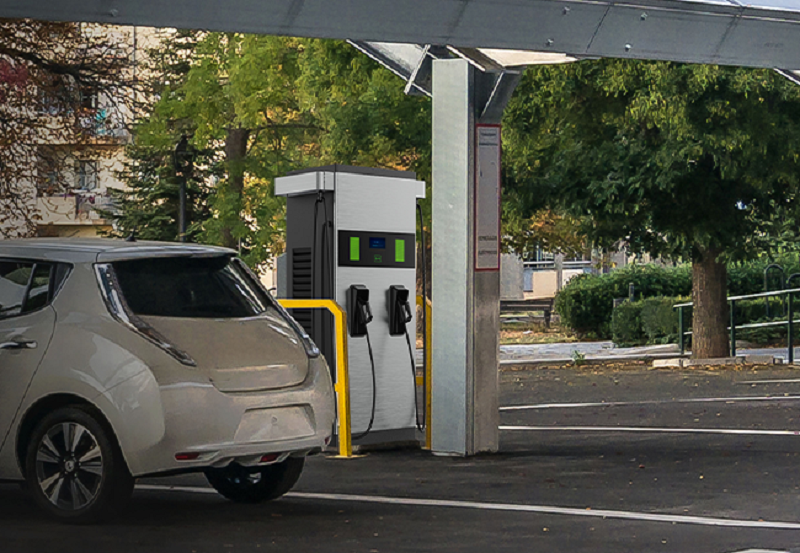
DC-snelladers (DCFC)vormen ongetwijfeld een integraal onderdeel van de EV-laadinfrastructuur. Er bestaan echter veel mythen over het opladen van DCFC. Vandaag zullen we zeven veelvoorkomende geruchten over DCFC-opladers ophelderen en de waarheid erachter onthullen.
Mythe 1: DCFC-laders zijn schadelijk voor EV-batterijen
Waarheid:Deze verklaring is niet juist. DCFC-laders zijn zelfs veilig voor EV-batterijen. Moderne EV’s zijn uitgerust met een geavanceerdeBatterijbeheersysteem (BMS), dat op intelligente wijze de laadparameters regelt om ervoor te zorgen dat de batterij in optimale staat werkt. Hoewel DCFC-laders krachtiger zijn, regelt het BMS op intelligente wijze de laadsnelheid om de gezondheid van de batterij te beschermen. Uiteraard kan snelladen de accu iets extra belasten ten opzichte van langzaam opladen, maar dit effect is minimaal.
Mythe 2: DCFC-opladers zijn alleen geschikt voor langeafstandsreizen
Waarheid: Dit is een eenzijdig begrip van DCFC-laders. Het is waar dat DCFC-laders de voorkeur hebben voor langeafstandsreizen vanwege hun efficiëntie en snelheid. De toepassingsscenario's gaan echter veel verder. In ons dagelijks leven, of kantoormedewerkers nu hun vrije tijd tijdens de werkdag gebruiken om op te laden, of te reageren op noodsituaties of ongeplande reizen, bieden DCFC-laders een betrouwbare oplaadoplossing die snel stroom aanvult. Dus of u nu lange of korte afstanden aflegt, DCFC-laders kunnen een belangrijke rol spelen.
Mythe 3: Alle DCFC-laders laden met dezelfde snelheid op
Waarheid: Dit is een veel voorkomende misvatting. De laadsnelheid van DCFC-laders varieert zelfs afhankelijk van de stroomcapaciteit en de compatibiliteit met elektrische voertuigen. Naarmate de technologie zich blijft ontwikkelen, ondersteunen nieuwere DCFC-apparaten doorgaans hogere oplaadsnelheden. Tegelijkertijd zijn leveranciers van EV-laders voortdurend bezig met het upgraden van de laadstations van hun voertuigen om deze geavanceerde oplaadtechnologieën beter te kunnen benutten. Daarom moeten consumenten bij het kiezen van laadapparatuur rekening houden met de laadcapaciteit van hun voertuig en de laadsnelheid van de laadapparatuur, om efficiënter gebruik te kunnen maken van hun laadtijd.
Mythe 4: DCFC-opladers zijn niet compatibel met alle EV-merken
Waarheid: Dit is een veel voorkomende misvatting over DCFC-laders. DCFC-laders zijn zelfs goed compatibel met alle EV-merken dankzij het wijdverbreide gebruik van gestandaardiseerde oplaadconnectoren zoalsCCS (gecombineerd laadsysteem)EnCHAdeMO. Dit betekent dat, ongeacht welk merk EV u rijdt, u eenvoudig een geschikte DCFC-lader kunt vinden. Bovendien zijn veel moderne DCFC-laadstations uitgerust met meerdere connectoren om aan verschillende laadstandaarden te voldoen, waardoor de beschikbaarheid en het gemak van laadfaciliteiten verder wordt vergroot.
Mythe 5: DCFC-opladers zijn duur in gebruik
Waarheid:De kwestie van de kosten van het gebruik van DCFC-laders kan niet echt worden veralgemeend. Terwijl de kosten perkilowattuur (kWh) van een DCFC-laadpaal mag dan iets hoger zijn dan thuisladen, het hangt ook af van de locatie, het laadnetwerk en of je wel of geen lidmaatschapsprogramma hebt. Sommige laadaanbieders bieden zeer concurrerende tarieven, en DCFC-laden is eigenlijk een goede optie voor wie snel moet opladen. Naarmate de EV-markt blijft groeien, worden de kosten van de DCFC-lader transparanter en kosteneffectiever.
Mythe 6: DCFC-laders laden altijd op volle snelheid op
Waarheid:Sommige mensen denken dat DCFC-laders altijd op maximale snelheid opladen, wat een misvatting is. De laadsnelheid is geen vaste waarde en wordt door veel factoren beïnvloed. Denk bijvoorbeeld aan de huidige staat van de EV-accu, de omgevingstemperatuur en de prestaties van de lader. Over het algemeen zal het opladen sneller gaan als de batterij bijna leeg is, maar het zal geleidelijk langzamer gaan naarmate de batterij de volledige capaciteit nadert. Als u deze nuances begrijpt, kunnen EV-eigenaren de oplaadverwachtingen beter beheren, effectiever gaan opladen en zo beter gebruik maken van niveau 3 DCFC-laders.
Mythe 7: DCFC-laders zijn niet milieuvriendelijk
Waarheid: Hoewel de productie en inkoop van elektriciteit voor DCFC-laders enige impact hebben op het milieu, is hun ecologische voetafdruk doorgaans lager dan die van een conventionele verbrandingsmotor. Dit komt omdat elektrische auto’s energiezuiniger zijn en minder broeikasgassen uitstoten dan conventionele voertuigen, zelfs als alle methoden van energieopwekking in aanmerking worden genomen. Bovendien zal de impact op het milieu van DCFC-laden verder afnemen naarmate het elektriciteitsnet steeds meer gebruik maakt van hernieuwbare energiebronnen.
Conclusie
DCFC-laders zijn een integraal onderdeel van de oplaadfaciliteiten voor elektrische voertuigen. Er bestaan echter nog steeds verschillende misvattingen rond deze laders. DCFC veroorzaakt minimale batterijschade. Ten tweede is hij niet alleen geschikt voor reizen over lange afstanden, maar ook voor dagelijks gebruik en voor noodgevallen, waarbij de kosten voor snelheidscompatibiliteit variëren afhankelijk van elke oplader. Ten slotte is de CO2-voetafdruk doorgaans lager dan die van conventionele voertuigen, en naarmate de technologie verbetert, zal ook de ecologische voetafdruk verder worden verkleind door de vooruitgang op het gebied van de oplaadtechnologie.
Posttijd: 08 april 2024
